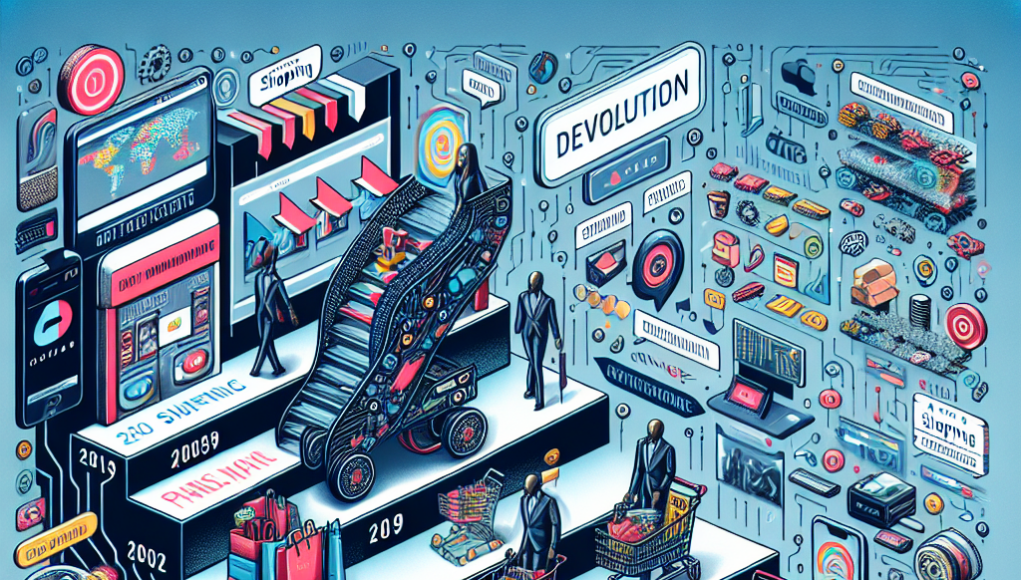The digital landscape of retail has undergone a profound transformation over the past two decades. Online shopping, once a novel concept, is now a staple of modern consumerism. As we look towards the future, the focus is increasingly on personalization—tailoring the shopping experience to meet individual preferences and needs. This article delves into the evolution of personalized online shopping, the emerging technologies driving this change, and the challenges and opportunities that lie ahead for digital retail.
The Evolution of Personalized Online Shopping
Personalized online shopping has come a long way from its early days, where recommendations were based on rudimentary algorithms. Initially, personalization was limited to simple suggestions based on past purchases or frequently bought items. As technology evolved, so did the complexity and accuracy of these systems, moving towards more sophisticated models that consider a user’s browsing history, location, and even social media activity.
The introduction of big data analytics marked a significant milestone in personalization. Retailers began leveraging vast amounts of data to gain insights into consumer behavior, enabling them to create more targeted marketing strategies. This shift allowed for a more customized shopping experience, with recommendations that felt intuitive and relevant to the consumer’s needs and preferences.
Another key development was the rise of AI and machine learning in e-commerce. These technologies enabled a deeper understanding of customer preferences, allowing for dynamic personalization that adapts in real-time. This meant that personalization was no longer static but could evolve alongside the consumer’s changing tastes and behaviors.
Subscription services and curated shopping experiences have also played a pivotal role in the evolution of personalized online shopping. These models offer consumers a tailored selection of products based on their preferences, often with the assistance of AI-driven curation. This approach not only enhances the shopping experience but also fosters brand loyalty by creating a sense of exclusivity and personal connection.
Social media platforms have increasingly influenced personalized shopping by serving as a bridge between retailers and consumers. Platforms like Instagram and Pinterest have become integral in shaping shopping habits, offering personalized ads and shoppable posts that cater to individual interests. This integration of social media and e-commerce has blurred the lines between browsing and buying, making the shopping experience more seamless and personal.
Finally, the evolution of personalized online shopping has been driven by the demand for convenience and efficiency. Consumers now expect a shopping experience that is not only tailored to their preferences but also frictionless and time-saving. This demand has pushed retailers to continuously innovate and refine their personalization strategies to meet the ever-evolving expectations of the modern consumer.
Emerging Technologies Shaping the Experience
Artificial Intelligence (AI) and machine learning are at the forefront of the technological advancements shaping personalized online shopping. These technologies enable retailers to analyze consumer data with unprecedented precision, allowing for highly targeted recommendations and a more engaging shopping experience. AI-powered chatbots and virtual assistants further enhance personalization by providing real-time customer support and tailored product suggestions.
Augmented Reality (AR) and Virtual Reality (VR) are revolutionizing the way consumers interact with products online. AR applications allow shoppers to visualize products in their own environment, such as trying on clothes virtually or seeing how furniture looks in their home. This immersive experience bridges the gap between physical and digital shopping, providing a level of personalization that was previously unattainable.
Blockchain technology is emerging as a tool for enhancing transparency and trust in online shopping. By providing a secure and immutable record of transactions, blockchain can help ensure product authenticity and traceability. This technology also has the potential to enhance personalization by securely storing and managing consumer data, allowing for more accurate and trustworthy recommendations.
The Internet of Things (IoT) is another technology that is shaping the future of personalized shopping. IoT devices, such as smart home assistants and wearable tech, collect valuable data on consumer habits and preferences. This data can be used to deliver personalized shopping experiences, such as automatic reordering of household items or tailored fashion recommendations based on daily activity levels.
Voice commerce is gaining traction as a new channel for personalized shopping. With the proliferation of smart speakers and voice-activated assistants, consumers can now make purchases using voice commands. This hands-free shopping experience is not only convenient but also allows for a more personalized interaction, as voice assistants can learn and adapt to the user’s preferences over time.
Finally, advancements in data analytics and predictive modeling are enabling more refined personalization strategies. By analyzing patterns in consumer behavior, retailers can anticipate future needs and preferences, offering personalized promotions and recommendations before the consumer even realizes they need them. This proactive approach to personalization is set to redefine the online shopping experience, making it more intuitive and aligned with individual expectations.
Challenges and Opportunities in Digital Retail
Despite the advancements in personalized online shopping, several challenges remain. Data privacy concerns are at the forefront, as consumers become increasingly aware of how their personal information is used. Retailers must navigate the delicate balance between offering personalized experiences and respecting consumer privacy, ensuring compliance with regulations such as GDPR and CCPA.
The complexity of integrating new technologies into existing systems presents another challenge. Retailers must invest in infrastructure and expertise to effectively implement AI, AR, and other emerging technologies. This can be a significant barrier for smaller businesses, which may lack the resources to compete with larger, tech-savvy competitors.
Consumer trust is another critical challenge in digital retail. With the rise of fake reviews and counterfeit products, building and maintaining trust is more important than ever. Retailers must prioritize transparency and authenticity in their personalization strategies to foster consumer confidence and loyalty.
On the opportunity side, the rise of mobile commerce presents a significant growth area for personalized shopping. With more consumers shopping via mobile devices, retailers have the chance to create seamless, personalized experiences that cater to on-the-go lifestyles. Mobile apps and responsive websites can offer tailored recommendations and promotions, enhancing the shopping experience and driving engagement.
The global reach of online shopping offers retailers the opportunity to tap into new markets and demographics. By leveraging data and insights, retailers can tailor their offerings to meet the unique preferences and needs of consumers in different regions. This localization of personalization can help retailers expand their customer base and increase market share.
Finally, the future of personalized online shopping presents an opportunity for retailers to differentiate themselves in a crowded marketplace. By offering unique and tailored shopping experiences, retailers can stand out from competitors and build lasting relationships with consumers. As technology continues to evolve, the possibilities for personalization are endless, paving the way for a new era of digital retail.
The future of personal shopping online is poised for transformative change, driven by technological advancements and evolving consumer expectations. As retailers navigate the challenges and opportunities of digital retail, the focus will remain on delivering personalized experiences that resonate with individual consumers. By embracing emerging technologies and prioritizing transparency and trust, retailers can create a shopping experience that is not only convenient and efficient but also deeply personal and engaging. As we look ahead, the potential for innovation in personalized online shopping is limitless, promising a future where the digital shopping experience is more intuitive, immersive, and aligned with the needs of each consumer.










